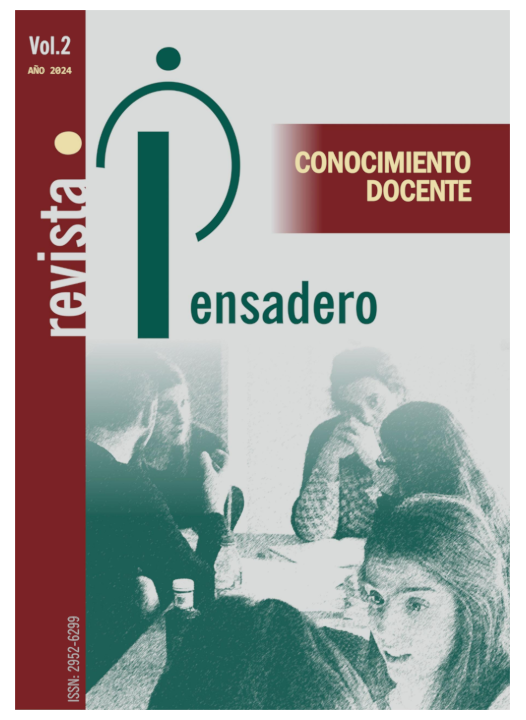Abstract
The social perception of our educational reality, especially with regard to younger generations (their knowledge and skills, social ways and behaviour, discipline, tendency to effort, etc.) is frequently placed in a pessimistic position that points towards social decline and the dire future. However, looking back and scrutinizing history from a scientific perspective, as well as an analysis of the available data beyond this discouraging story, can show us a more prosaic reality. A reality that is configured into a traceable constant as far as written records reach. Youth is, in essence, as it has always been. The distorted image of our present that is projected responds to a series of cognitive biases well studied in scientific literature, among which nostalgic retrospective stands out. This understandable and radically human perception draws a mythological image of the past, especially the most recent one, plausible but incorrect. As an ultimate result, a response of moral panic is unleashed that closes the circle and feeds back into the system. In order to perform effectively and efficiently in socio-educational realities, it is necessary to seek higher levels of objectivity, taking a certain distance and assuming that our present is not, perhaps, as rosy as we would like, but not as black as it is regularly portrayed.
References
Adler, O., & Pansky, A. (2020). A ‘rosy view’ of the past: Positive memory biases. En T. Aue y H. Okon-Singer (Eds.), Cognitive biases in health and psychiatric disorders. Academic Press.
Andrzejewski, D., Zeilinger, E.L., & Pietschnig, J. (2024). Is there a Flynn effect for attention? Cross-temporal meta-analytical evidence for better test performance (1990–2021). Personality and Individual Differences, 216. https://doi.org/10.1016/j.paid.2023.112417
Aronson, E. (2000). El animal social. Alianza.
Aronson, E. (1969). The theory of cognitive dissonance: a current perspective. Advances in experimental Social Psycholoty, 4, 1-34.
Balado, L. (2023. 17 de enero). Radiografía de la generación de cristal: ¿realmente los jóvenes son hoy menos resistentes? ¿sus padres lo tuvieron más fácil? La Voz de Galicia. https://www.lavozdegalicia.es/noticia/lavozdelasalud/salud-mental/2023/01/13/radiografia-generacion-cristal-realmente-jovenes-hoy-resistentes-padres-facil/00031673624080860241430.htm
Cohen, S. (1972). Folk Devils and Moral Panic. Routledge.
Cranor, C.F. (2004). Toward understanding aspects of de precautionary principle. Journal of Medicine and Philosophy, 29(3), 259-279.
Froxán Parga, M.X. (2020). Análisis funcional de la conducta humana: concepto, metodología y aplicaciones. Pirámide.
García Doval, F.M. (2022). Psicomitos. Una crítica a la psicología no científica. Biblioteca de Psicología El País.
García Herrero, M.C. (2018). Los jóvenes en la baja edad media. Estudios y testimonios. Institución Fernando el Católico.
García Navarro, S. (2017, 27 de mayo). La generación blanda. El País. https://elpais.com/elpais/2017/05/25/opinion/1495710913_825163.html
Golding, S.L., & Rorer, L.G. (1972). Illusory correlation and subjective judgment. Journal of Abnormal Psychology, 80(3), 249-260.
Goode, E., & Ben-Yehuda, N. (1994). Moral panics: culture, politics, and social construction. Annual Review of Sociology, 20, 149-171.
Hall, S. (2012). Theorizing crime and deviance: a new perspective. Sage.
Harmon-Jones, E., & Mills, J. (2019). An introduction to cognitive dissonance theory and an overview of current perspectives on the theory. En E. Harmon-Jones (Ed.), Cognitive dissonance: reexamining a pivotal theory in psychology, 3-24. American Psychological Association. https://doi.org/10.1037/0000135-001
Horacio. (c. 20 a.C.) Odas. Libro III. https://en.wikisource.org/wiki/Translation:Odes_(Horace)/Book_III/6
Jewkes, Y. (2011). Media and moral panics. En Y. Jewkes (Ed.), Media & Crime. London & Thousand Oaks.
Kahneman, D. (2012). Pensar rápido, pensar despacio. Debate.
Kramer, S.N. (1985). La historia empieza en Sumer. Ediciones Orbis.
López Varona, J.A., & Moreno Martínez, M.L. (1997). Resultados de matemáticas. Tercer estudio internacional de matemáticas y ciencias (TIMSS). Ministerio de Educación y Ciencia.
Marciales Vivas, G.P., & Cabra Torres, F. (2011). Internet y pánico moral, revisión de la investigación sobre la interacción de niños y jóvenes con los nuevos medios. Universitas Psychologica, 10(3), 855-865.
Matute, H. (2019). Nuestra mente nos engaña. Shackleton Books.
Ministerio de Educación y Formación Profesional y Deportes. (2020, 12 de febrero). Nivel de formación, Formación permanente y Abandono: Explotación de las variables educativas de la Encuesta de Población Activa. https://www.educacionfpydeportes.gob.es/servicios-al-ciudadano/estadisticas/laborales/epa.html
Ministerio de Educación, Formación Profesional y Deportes. (2023). PISA 2022. Programa para la evaluación internacional de los estudiantes. Informe español. INEE.
Ministerio de Educación y Formación Profesional y Deportes. (2020). TIMSS 2019. Estudio internacional de tendencias en matemáticas y ciencias. Subdirección General de Atención al Ciudadano, Documentación y Publicaciones.
Pajares Box, R. (2005). Resultados en España del estudio PISA 2000. INECSE.
Pérez Fernández, F. (2009). Psiquiatría y censura en el cómic estadounidense. Fredric Wertham y la seducción del inocente. Revista de Historia de la Psicología, 30(2-3), 301-309.
Platón. (1871). Fedro. En Patricio de Azcárate (Ed.) Platón, Obras completas. https://www.filosofia.org/cla/pla/img/azf02257.pdf
Pronin, E., Lin, D., & Ross, L. (2002). The bias blind spot: perceptions of bias in self versus others. Personality and Social Psychology Bulletin, 28(3), 369-381.
Ruíz Martín, H. (2022). Los secretos de la memoria. Ediciones B.
Víctor, J.S. (1998). Moral panics and the social construction of deviant behaviour. A theory and application to the case of ritual child abuse. Sociological Perspectives, 41(3), 541-565.
Vitruvio. (1995). Los diez libros de arquitectura. Alianza Forma.
Wertham, F. (1954). The seduction of the innocent. Rinehart & Company.
Zurbriggen, C.L.A., Jendryczko, D., & Nussbeck, F.W. (2021). Rosy or blue? Change in recall bias of students’ affective experiences during early adolescence. Emotion, 21(8), 1637-1649. https://doi.org/10.1037/emo0001031

This work is licensed under a Creative Commons Attribution-NonCommercial-NoDerivatives 4.0 International License.
Copyright (c) 2024 Fátima Mª García Doval

